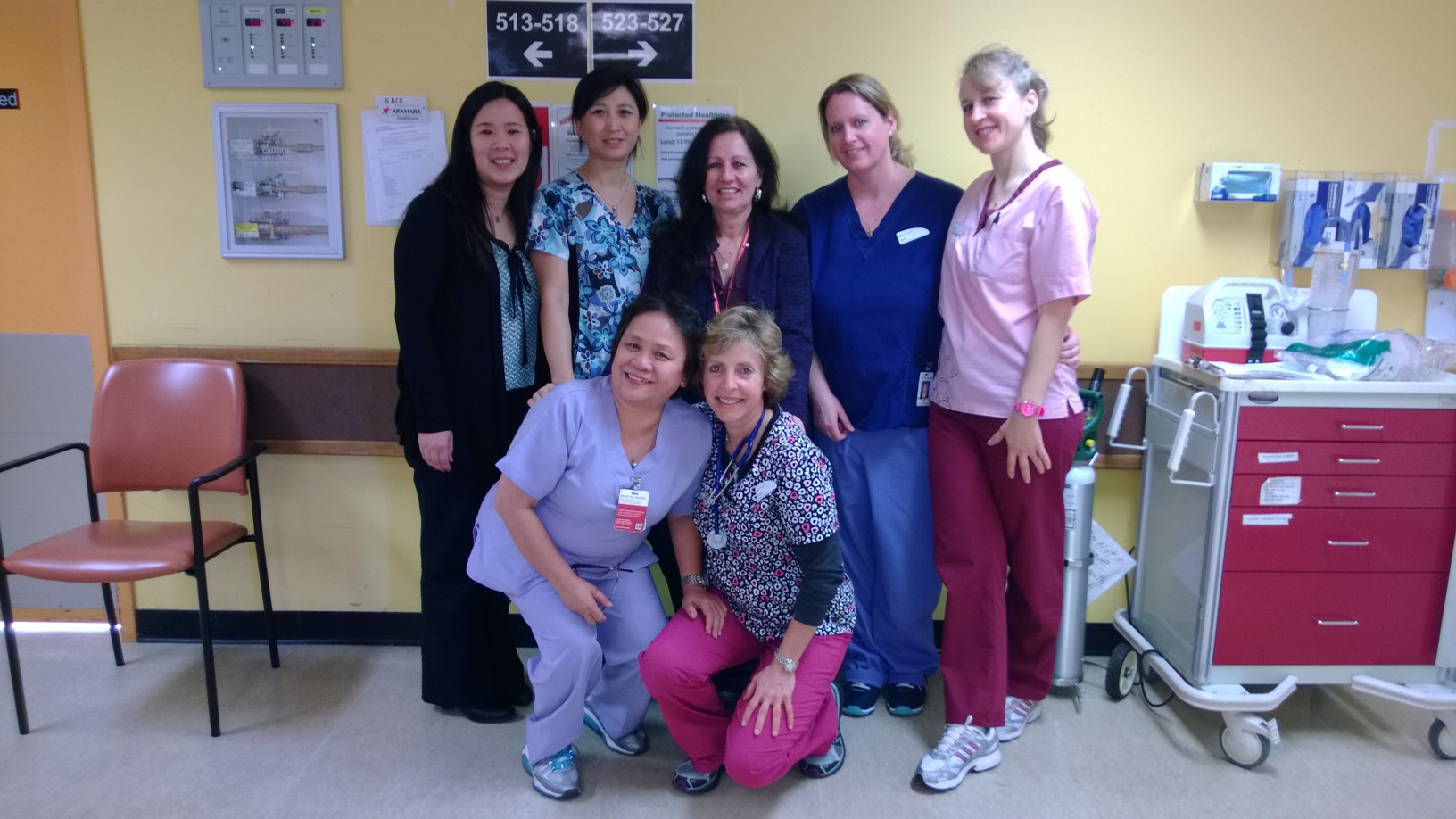
Study of protected lunchtime for older acute care patients at Burnaby Hospital creates fewer interruptions and leads to expansion of practice to stroke unit and beyond.
A few years ago, a new speech language pathologist from the United Kingdom joined Burnaby Hospital and was surprised to learn Canadian hospitals didn’t have a standard practice for all acute care and residential patients of protecting mealtimes from non-urgent interruptions. The UK’s National Health Service had implemented such a standard back in 2003. Jan Chan, dietitian practice leader, food and nutrition services, was working with that individual at Burnaby Hospital, and in 2013 decided to trial a pilot protected lunchtime for patients on the acute care for the elderly (ACE) unit.
“Other studies have shown that 40 to 69 per cent of hospitalized patients are malnourished, which can increase overall health care costs by 60.5 per cent due to increased length of stay and other costs,” says Jan.
Jan presented to Clinical Nutrition and Burnaby Hospital leadership and received approval for the study. A new policy was created to guide changes during a four-month pilot. Her study was the focus of her Master’s of Rehabilitation Science with the University of British Columbia (UBC) and took place without funding. As a practice leader and a clinical dietitian working on ACE, Jan was able to able to dedicate project time and clinical time to implementing the study.
The new policy created a one-hour protected lunchtime from 12 p.m. to 1 p.m. for the 35 beds on the ACE unit. Staff were required to stop all non-urgent, clinical and non-clinical, interventions and therapies during this time. This included anything from house-keeping visits to checking blood pressure to therapies with rehabilitation staff. Visitors were encouraged to assist family members with meals and save social visits for outside the protected mealtime. Staff breaks were altered to ensure staff was available to assist with meals. An added feature was that patients were asked to wash their hands before a meal.
Jan and the unit’s nurse educator completed a hospital-wide orientation of the new policy. “The literature I had read said if you didn’t do proper education and just had guidelines, it wouldn’t work,” says Jan. “You have to take the time to educate everybody – the whole hospital, not just a few people - and I found that meeting in person is best. If you’re willing to take the time to do it, it can be successful, but you need system-wide support. My colleagues were really supportive in helping me get this together.” As members of research team, her unit manager and the nurse educator assisted greatly in promoting the study, and Food Service interns helped create posters and conducted the audits.
The study included a pre and post pilot audit and a survey of staff after the pilot. “I received positive feedback from patients, families and care staff that they noticed a difference,” says Jan. “The wards were quieter and calmer and staff were able to get their work done while altering their schedules. We found a significant decrease in interruptions after implementation of the pilot compared to beforehand.”
Following the study, Jan, her unit manager and the nurse educator agreed protected mealtime should be an ongoing practice on the unit after the pilot. The unit was responsible for ongoing education and orientation which enabled the program to continue to be sustained.
To expand the impact of her research beyond her unit, Jan took several steps from 2013 through 2015 to share the results with many groups within Fraser Health and beyond. She co-published an article with Canadian Journal of Dietetic Practice and Research, presented a poster at the annual Quality Forum for BC health care, presented a UBC webinar, spoke at dietitian workshops, and presented to the Fraser Health executive leadership team and programs such as Rehabilitation.
So far, Jan isn’t aware of any hospital-wide or region-wide implementation of protected mealtimes in B.C. However, she has received many inquires about her study and is aware of examples of units subsequently implementing protected mealtimes, for example, Burnaby Hospital’s stroke unit, and units at St. Paul’s Hospital, Vancouver General Hospital and Richmond Hospital. Jan hasn’t been able to keep track but many other examples may exist within Fraser Health and beyond.
Until there are broader policies supporting protected mealtimes, it’s up to each unit to take it on. “Each ward needs to determine if this is a project they want to pursue and then run with it,” says Jan. To date, she’s helped units implement their own policies by sharing the results of her study, guidelines and educational materials she developed. She’s happy to continue to do so, but units need to be committed to adapting and implementing their own policies including ongoing hospital-wide education that’s required.
“My study indicated that a protected mealtime creates a more pleasant and focused period for eating that’s manageable for staff,” says Jan. “We weren’t able to collect enough data about nutritional intake during my study, so I recommend a larger mixed methods study so employees, physicians and patients can further understand the benefits of the protected mealtime.
Interested in getting involved in research? Contact us for more information.
